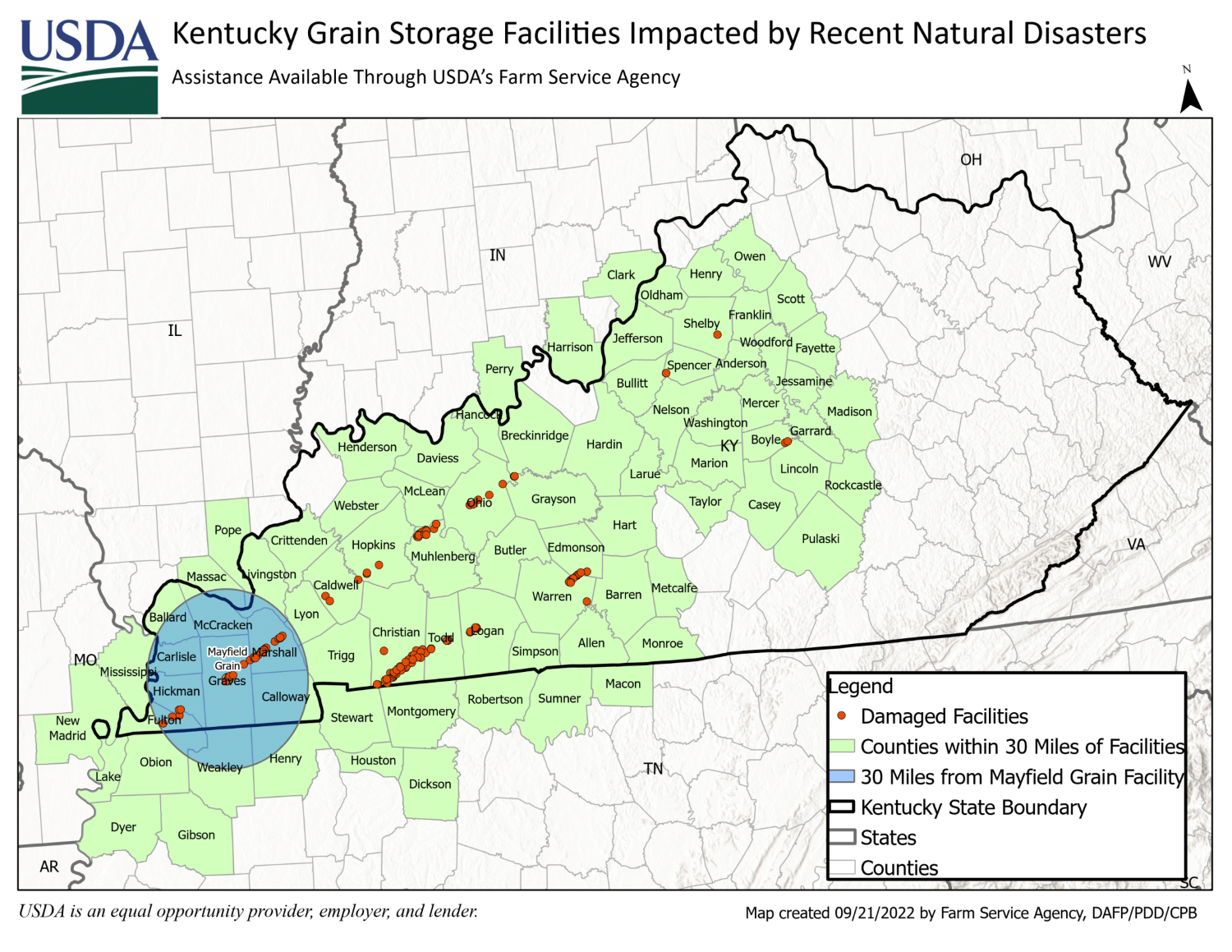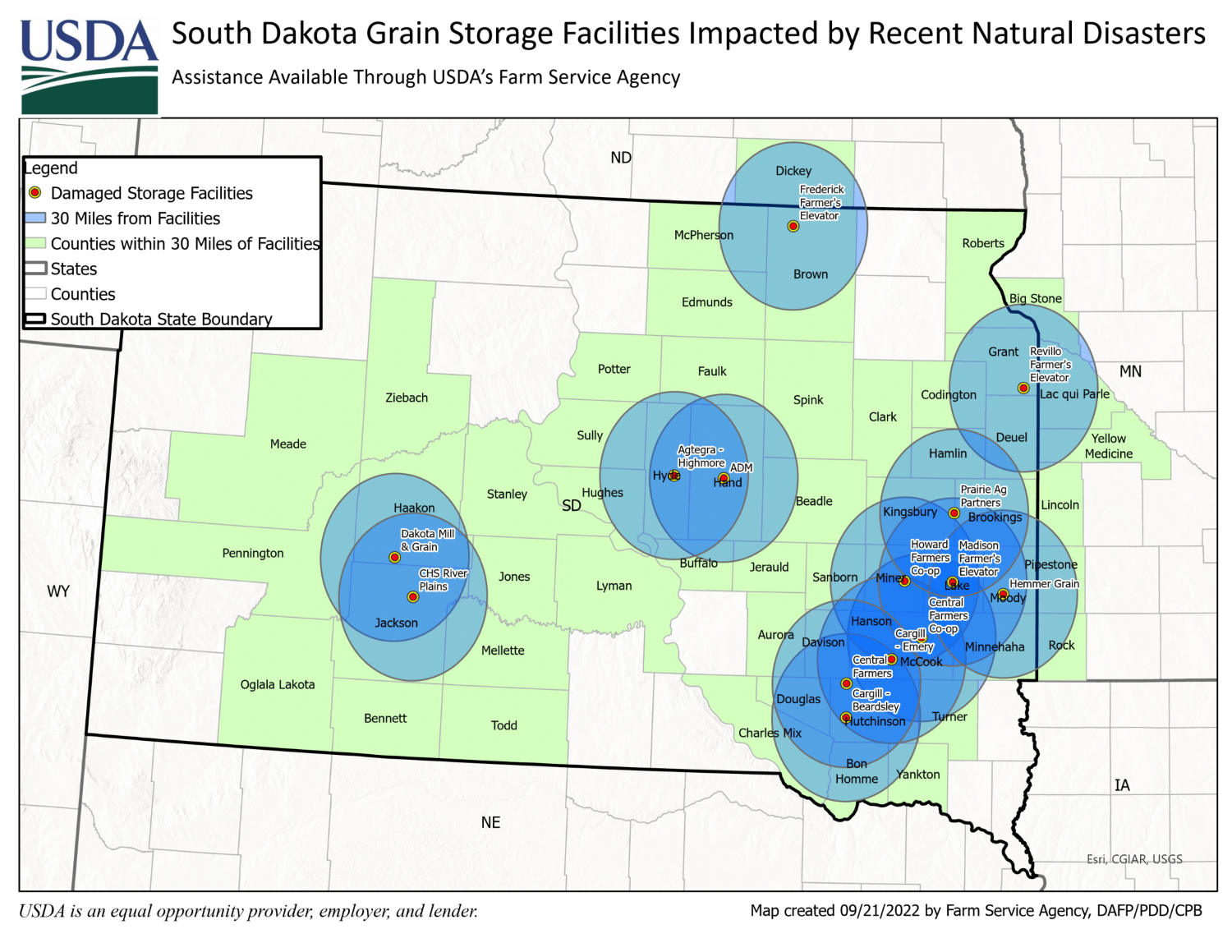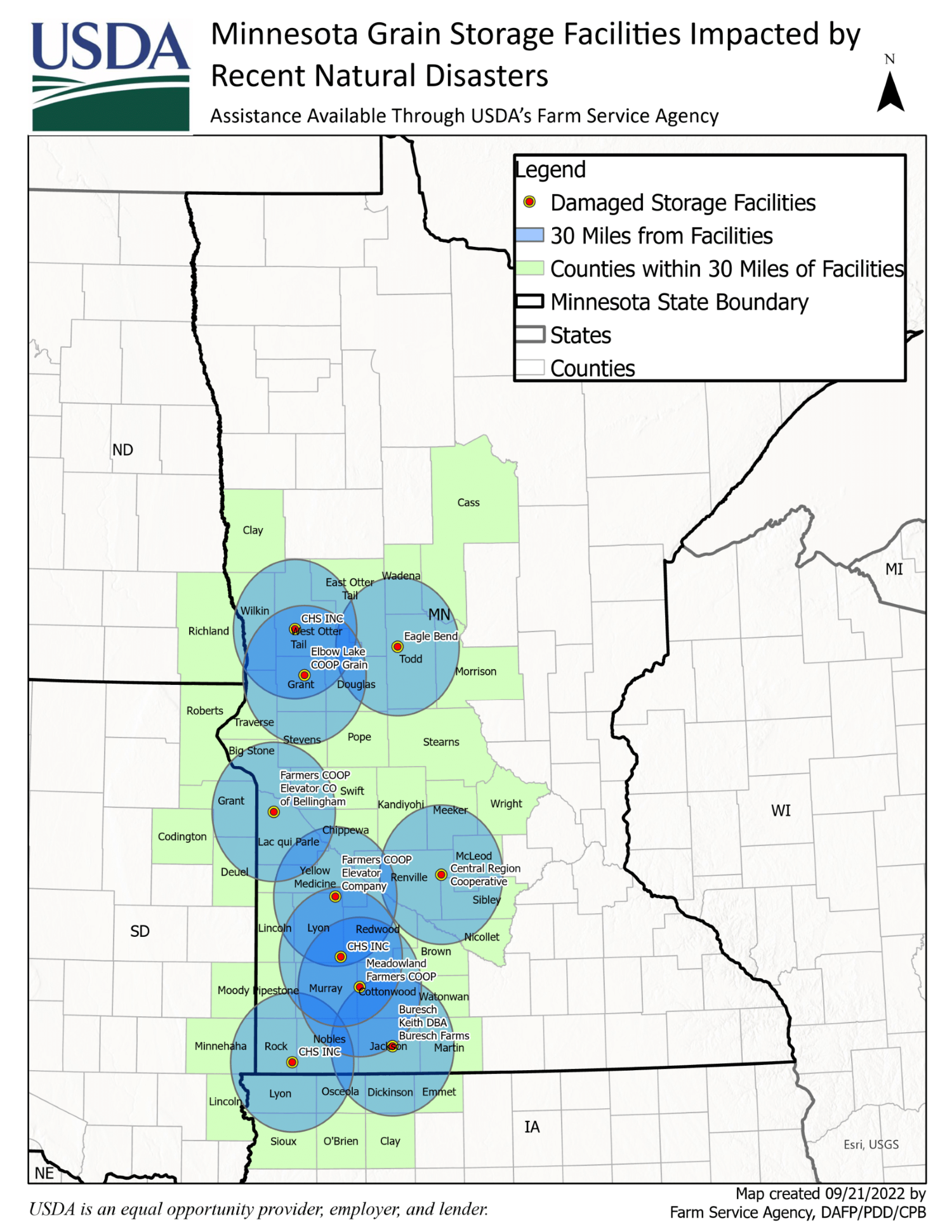The Agriculture Department has dramatically increased funding for a temporary program to help rebuild grain storage capacity in regions hit by storms in 2021 and 2022, but agency officials say the additional funds likely won't be enough to cover the high number of applications they have seen.
USDA's Farm Service Agency used Commodity Credit Corporation spending authority to set aside $20 million in March to build the Emergency Grain Storage Assistance program, which provides grants to cover some of the costs associated with building on-farm grain storage or grain equipment in areas hit by storms. The agency, seeing a wave of producer applications, added an additional $60 million in August.
“We had far more demand than we could possibly even begin to meet with our $20 million in cost share assistance that we made available,” FSA Administrator Zach Ducheneaux told Agri-Pulse.
The agency opened the program to applications on March 16 and intended to continue accepting applications through Dec. 29, according to a Federal Register notice. However, in an Aug. 7 announcement, FSA said it had stopped accepting applications due to “high demand for EGSFP assistance and limited funding.” Applications are handled on a “first-come, first serve” basis, Ducheneaux said.
FSA hasn't disclosed the number of applications it received, but Sen. John Thune, R-S.D., said at a recent event in his home state that “only a handful” of around 65,000 people who applied were able to secure grants through the program. He added that if the program was fully funded, the cost would be “in the billions.”
The funding covers 75% of the cost of building on-farm grain storage facilities or purchasing drying and handling equipment like ag baggers and augers. Farmers classified by USDA as underserved can receive funding to cover up to 90% of the costs. Farmers need to demonstrate a need for additional on-farm storage to be eligible, according to the Federal Register notice.
Ducheneaux said the agency has reallocated an additional $40 million in CCC funding to be used outside of the program to help with other aspects of grain storage losses. Details will be announced “in the coming weeks,” Ducheneaux said.
Senate Minority Leader Mitch McConnell, R-Ky., added language to the fiscal 2022 government funding bill directing the USDA to “identify funding streams” for rebuilding grain storage infrastructure in the wake of a tornado that devastated Western Kentucky in December 2021.

According to a Federal Register notice, the tornado destroyed one 6.5 million-bushel grain storage facility in Mayfield, Kentucky. The company — which according to the Kentucky Department of Agriculture, purchased corn, soybeans, wheat and canola from around 200 local farmers — has not yet decided whether it would rebuild.
Jed Clark, who farms in Graves County, Kentucky, said the loss of the Mayfield grain storage facility has forced producers to travel farther to sell their grain, which can be especially challenging to handle during the harvest season. The USDA funding, he said, will allow some farmers to store their grain until the harvest season finishes and they are able to spend more time transporting it to other elevators or facilities on the Mississippi River.
“I think in our area, we’re at a point where without our local elevators, there was going to be a lot of consolidation in farms, because, as we know, the average farmer is getting older and they may not have the equipment to haul the distance that’s needed to go to our new market,” he said. “I think this is a positive step in the right direction.”
Clark said his operation only has enough capacity to store around half his crops during a normal growing season. He said last year's harvest only amounted to around one-third of his normal corn crop due to the drought, which alleviated some of the need for storage. This year’s crop, however, may come with some added storage challenges for Clark and other farmers in his region.
Clark applied for the program and secured funding to build a 50,000-bushel grain bin. He isn't sure the project will be done in time for this year's harvest, but it will help next year, he said.
Don't miss a beat! Sign up for a FREE month of Agri-Pulse news! For the latest on what’s happening in agriculture in Washington, D.C. and around the country, click here.
USDA also opened the funding to grain producers in Illinois, Indiana, Iowa, Minnesota, Missouri, North Dakota, South Dakota and Tennessee located within a 30-mile radius of a damaged commercial grain elevator.
But not all farmers have been satisfied with the process. Many producers hoping for funding to help cover the cost of erecting grain bins or purchasing equipment have been left disappointed after failing to secure assistance through the competitive program. National Farmers Union President Rob Larew said the issue has come up “several times” during his recent visits with producers in Minnesota, Illinois, Indiana and South Dakota.
“The lack of funding has really been a source of just a lot of frustration,” Larew told Agri-Pulse at the South Dakota State Fair on Saturday.
John Simonson, who farms in Hyde County, South Dakota, lost two 42,000 bushel grain bins when a derecho swept through last summer. His damaged bins were located within a 30-mile radius of a damaged Agtegra grain storage facility, which made him eligible for this program.
Simonson was able to rebuild the two bins for $100,000 each, with around $67,000 of the cost of each being covered by his insurance. That project, which happened last year, was ineligible for EGSFP funding because it happened before the program’s March 16 start date.
Simonson said other farmers who immediately spent money to rebuild their grain storage after being hit by disasters are “really left out” of the program. In the wake of a disaster, he said it's difficult for producers to decide whether they should hold out and wait to see whether federal assistance comes through or if they should move ahead with their rebuilding plans.

“If you had somebody that went ‘I need it. I’ve got to have it,’ pulled the trigger in that anticipation and now is sitting without money,” Simonson said, “they’ve got a very bitter pill to swallow there.”
Another Hyde County producer, Ken Branine, expressed concern about funding limitations in the program last month at a Dakotafest event with South Dakota’s three members of Congress. Branine asked Thune whether the program would continue in the future.
“We’re talking to USDA about it now and we will continue to do that,” Thune responded. “One of the issues with the farm bill is where you get all the money and how you distribute it. This could be an issue that gets engaged in the disaster provisions of the farm bill.”
For more news, go to Agri-Pulse.com.


